Szabadság Square is a symbolic place of our national existence, its name also expresses our regained independence after several centuries of oppression. From the end of the 18th century, a huge barracks stood here, which also served as a prison. After the 1848-1849 revolution and war of independence, many people were imprisoned within its walls, and the first prime minister, Count Lajos Batthyány, was also executed in its courtyard. The justly hated barracks stood for decades even after the Compromise, but by the end of the century, in 1897, it was finally demolished. In its place, a illustrious square was created, some of whose streets were named after the martyrs of Arad: Károly Vécsey, Lajos Aulich and Ernő Kiss were commemorated in this way.
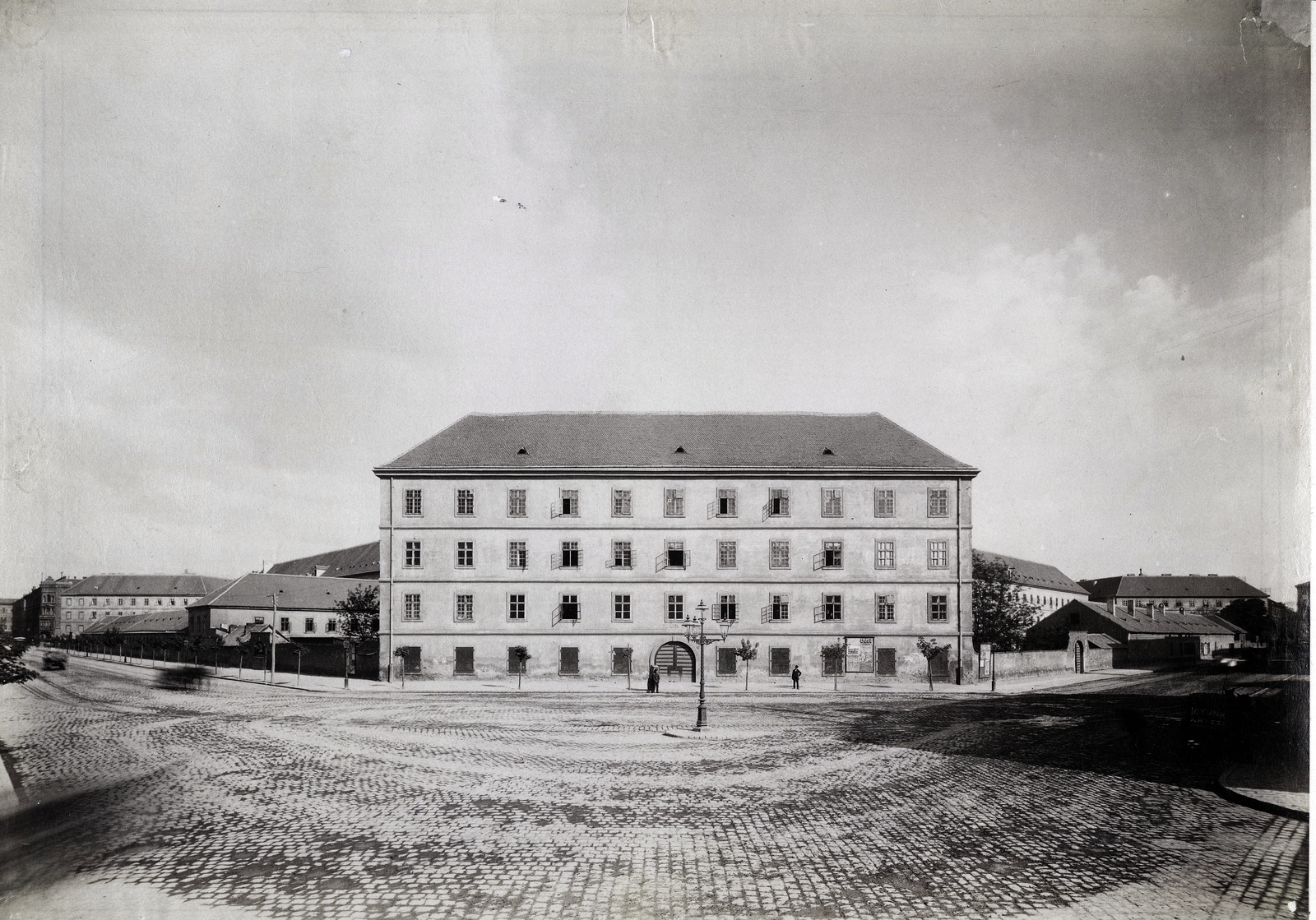
One of the corner blocks of the Újépület [New Building] shortly before its demolition, in 1896 (Source: Fortepan/Budapest Archives. Reference No.: HU.BFL.XV.19.d.1.08.049)
After the Trianon peace decree, it was obvious that, like for the executed heroes, a monument should be erected here for the parts of the country that were torn away. The official proposal was made by Róbert Kertész K., the adviser of the Ministry of Religion and Public Education, and the installation of the statues was financed by the irredentist organization Védő Ligák Szövetsége, led by Nándor Urmánczy. In the northern, semi-circular end of the square, four statues were placed in accordance with the points of the compass, since historical Hungary was mutilated from all directions. Clockwise, the order was as follows: West (Burgenland), North (Upper Hungary), East (Transylvania and Partium), South (Southern Territories).
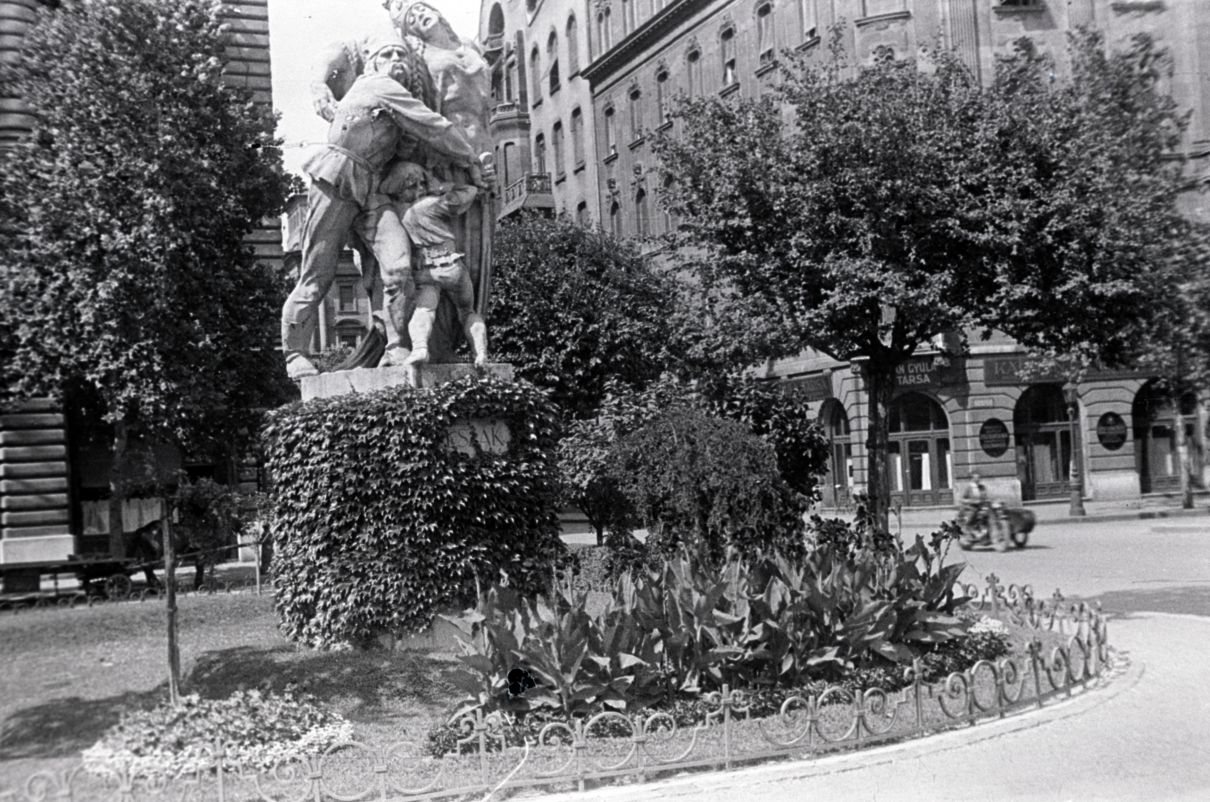
The allegorical statue of the North, i.e. Upper Hungary (Source: Fortepan/No.: 174107)
The allegorical sculptures personified the enclosed areas as twice life-sized male and female figures, and their creators were talented artists of the time, in order: Ferenc Sidló, Zsigmond Kisfaludi Strobl, János Pásztor and István Szentgyörgyi. The pedestals for all four statues were designed by Jenő Lechner. Thanks to the enthusiastic supporters, the work progressed at an extremely fast pace, and on 16 January 1921 - that is, just over half a year after the signing of the tragic peace treaty - the statues were already inaugurated. However, the commemoration did not end there. In August 1927, Nándor Urmánczy also initiated the establishment of a National Flag in the columns of the Pesti Hírlap.
"Let's learn to appreciate what is ours. Let's also love our flag and make a cult out of respecting our flag. A flag flying on the facade of a building, on the mast of a ship, on the bastion of a castle, on the top of a mountain or over an open area is not a simple decoration. It has a role and importance. As if it were a real living person: it speaks, preaches, rules. […] We also set up a flag in front of the irredentist statues on Szabadság Square. But there, the flag flown at half-mast will not be a symbol of happy pride. That flag will wave angrily and demand from us the fulfilment of our duty. It will demand from us that we no longer tolerate Hungarian humiliation."
By erecting the flag, they wanted to remind people of the task of unifying Great Hungary, and it was also intended as a place of pilgrimage where people could strengthen their faith in the true goal. In order to express the content relationship with the four statues, the flagpole would have been placed in the semi-circle formed by them, in place of the flower bed depicting historical Hungary. However, the Capital did not approve the location, because a previously planned Statue of Liberty was intended there. The monument had to be moved a little further south, under the line drawn by Zoltán and Perczel Mór Streets. However, it was placed in the central axis of the space, so its effectiveness was not impaired.
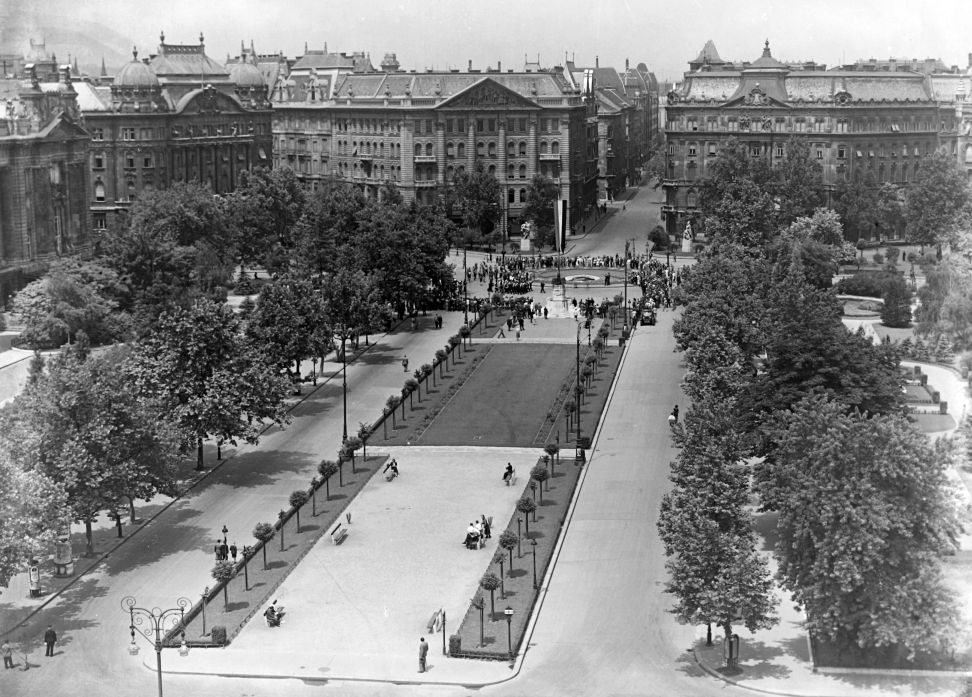
The image of Szabadság Square, the National Flag and the statues can be seen in the background (Source: Fortepan/No.: 31899)
The detailed plans were drawn up by Jenő Lechner in February 1928: he designed an elliptical building standing on a four-step platform, with a pulpit in front. The building consisted of two parts: the lower one was a smooth-surfaced pedestal on which inscriptions were engraved, and the upper one was a block pillar covered with tulip carvings, which was the actual flag holder. There were two inscriptions on the lower plinth:
"Our country is the country of the Carpathians, Great Hungary. Founded in 896 by Prince Árpád, it will survive until the end of the world." And underneath it was the Hiszekegy [Hungarian Credo]: "I believe in one God, I believe in one country, I believe in one divine eternal truth, I believe in the resurrection of Hungary."
At the top of the upper pillar, a bronze turul bird with outstretched wings stood guard, which referred to the antiquity of Hungarians and the legend of our origin. Behind the turul, the twenty-meter-high larch flagpole, tapering upwards, was mounted on the end of which a top decoration depicting a hand raised to an oath was mounted - this was supposedly modelled after the hand of Miklós Horthy.
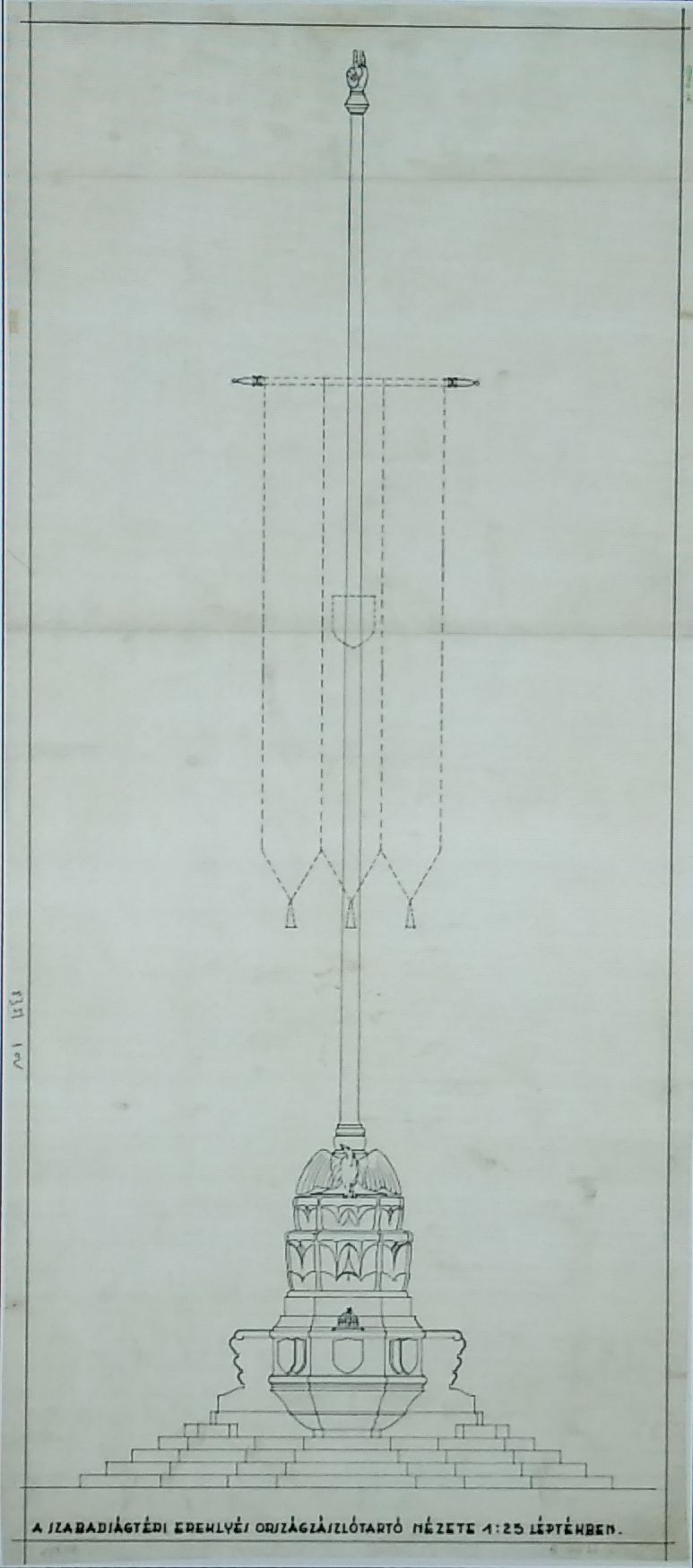
Plan of the National Flag with the supporting structure and the top decoration on top of the pole (Source: Kiscelli Museum of the Budapest History Museum)
Behind the turul, Lechner placed the reclining figure of a helmeted, mace-wielding warrior with his arm pointing upwards. The turul stood on the north side of the monument, and the warrior on the south side facing the square, and the lines of the Hiszekegy were also on the south side. The underground base of the structure - its entire area - was divided into compartments, and in them, soil from the most prominent areas of the country and from beyond the borders was collected. This was covered with a movable capstone so that more soil to be sent later could be added.
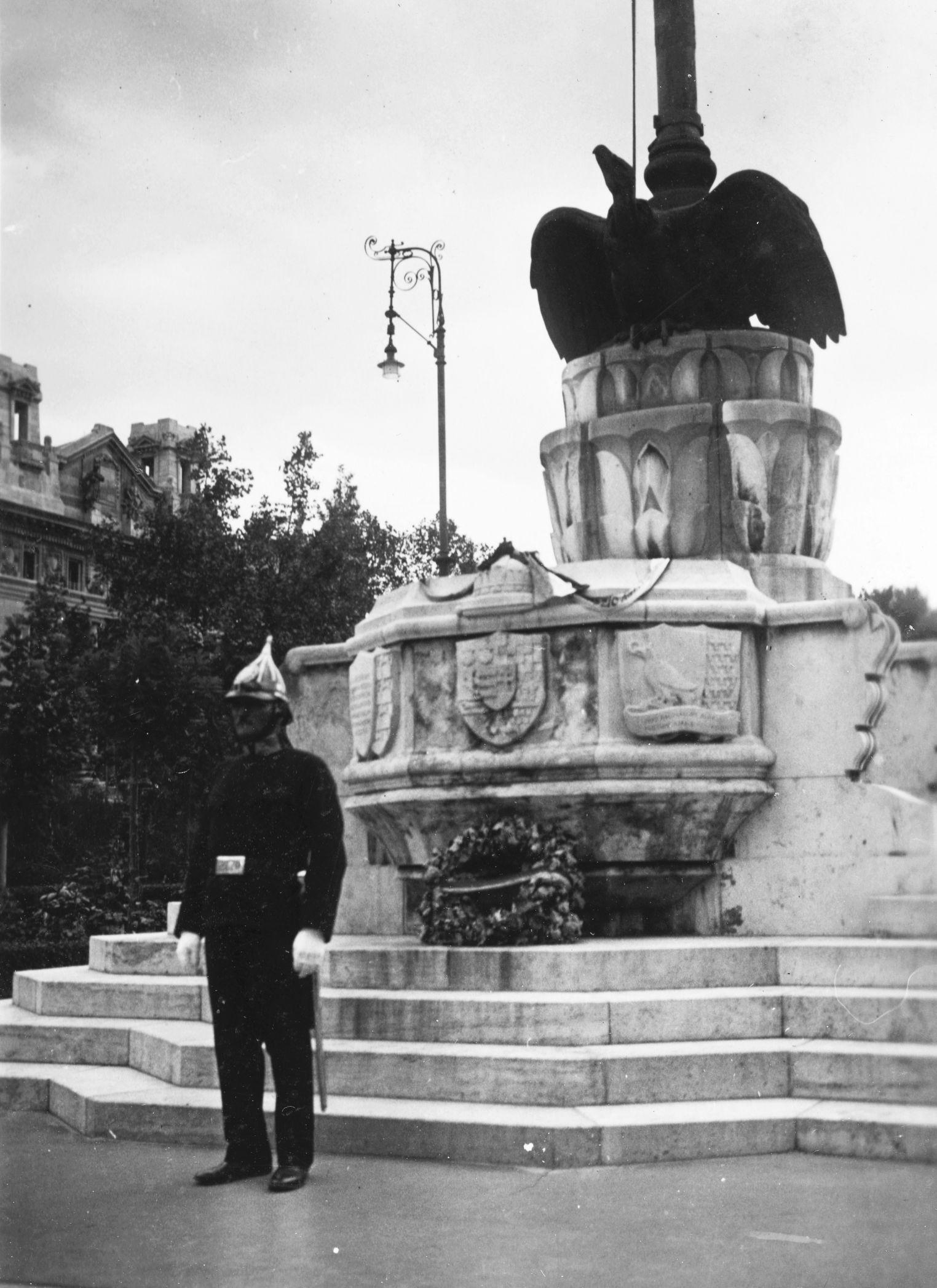
The building of the National Flag with the pulpit (Source: Fortepan/No.: 39241)
The pulpit was connected to the northern side of the monument, facing the Parliament, and on its parapet was the coat of arms of the Holy Crown and Great Hungary divided into parts. The bronze turul was shaped by the sculptor Richárd Füredi, and the national flag was produced by Géza Rumold based on drawings by the graphic artist Marianne Lechner, daughter of Jenő Lechner. The flag featured the full coat of arms of Great Hungary, thereby expressing the monument's intention of territorial revisionism. The coat of arms was surrounded by Hungarian cord embroidery, above it the phrase "Don't hurt the Hungarians!" was included.
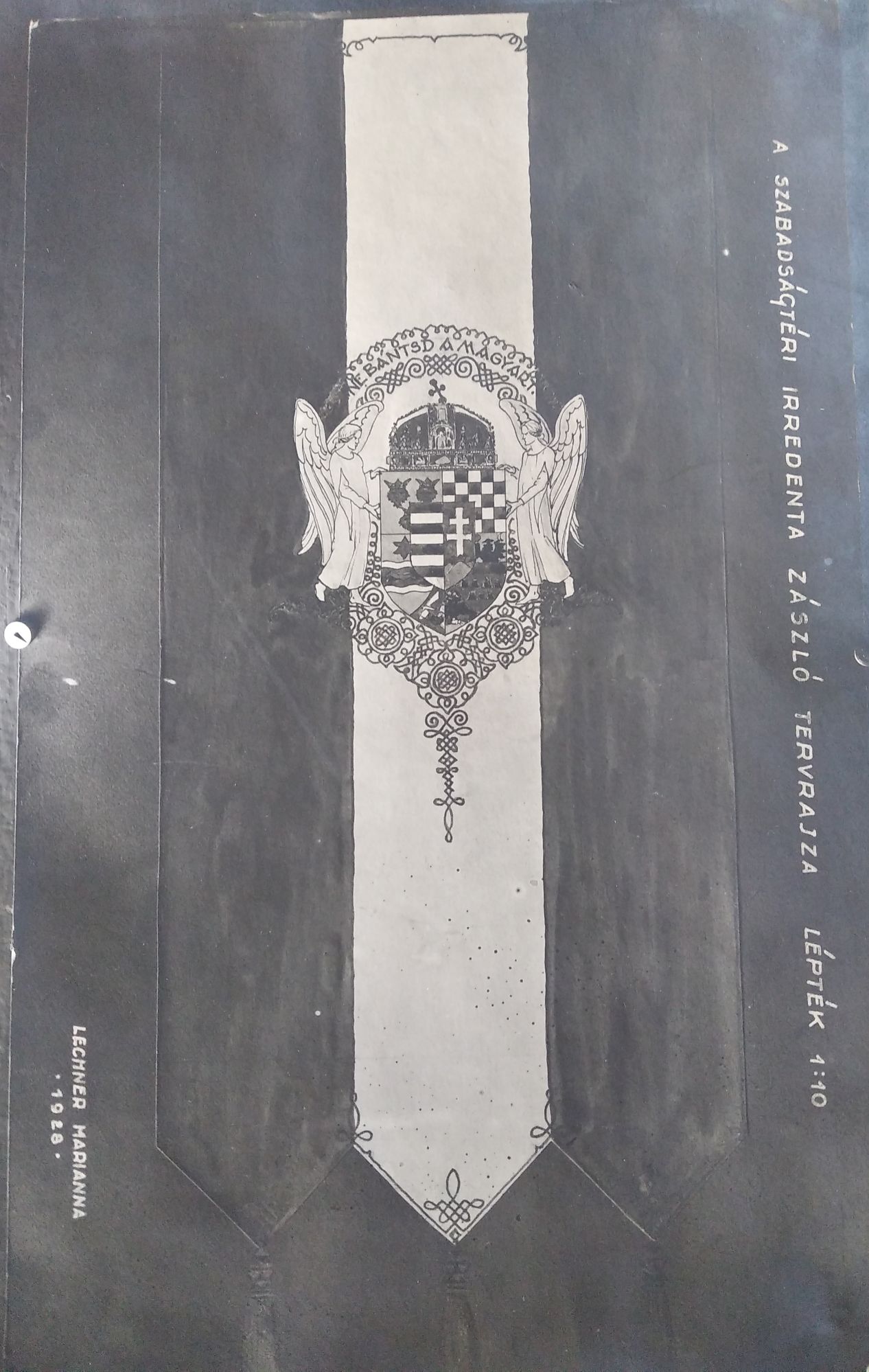
The design of the National Flag on a black and white photograph (Source: Private collection)
The construction was carried out by István Pucher's construction company, and the stone carving by Béla Seenger's company. The construction took about half a year, and its ceremonial inauguration took place on 20 August 1928. The relics, i.e. bags filled with earth, were then placed under the pedestal. However, this was not the end of the series of programs organized around the national flag: the model made in Jenő Lechner's office was taken to Lord Rothermere in London by a delegation led by Nándor Urmánczy. On 21 June 1927, the English press magnate - the owner of the largest British newspaper of the time, the Daily Mail - published an article entitled Magyarország helye a nap alatt (English original: Hungary's Place in the Sun), in which he urged the renegotiation of the Trianon Peace Treaty. It is understandable that he gained enthusiastic followers in our country, a decorative fountain was even erected in his honour on Kálvin Square, which can still be seen today.
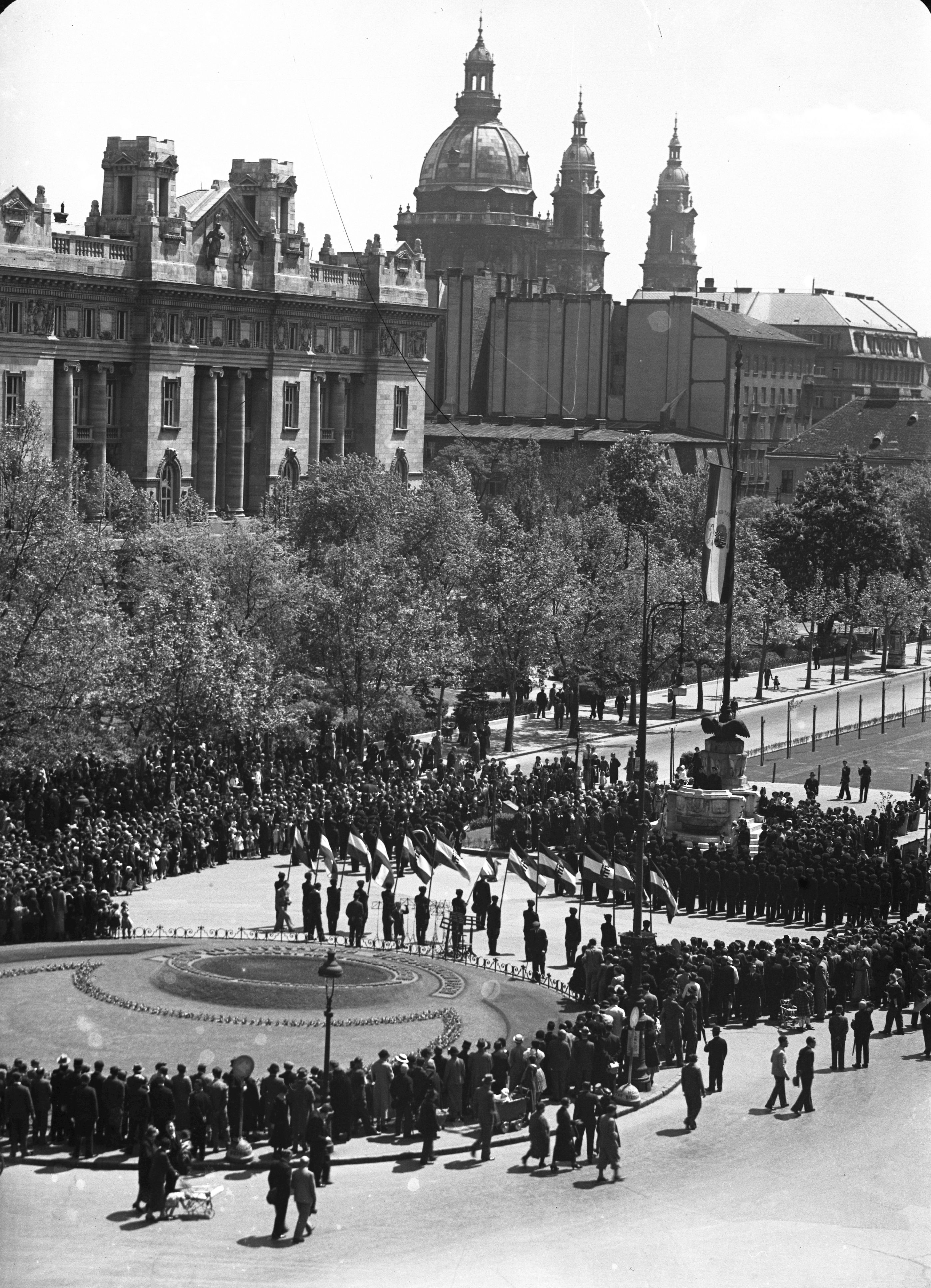
Ceremony in front of the National Flag in 1936 (Source: Fortepan/No.: 32173)
Unfortunately, the national flag itself no longer stands, it was removed from the square in 1945. During its short history, the flag was raised to the top of the mast only a few times: during the expansions of territory between 1938 and 1941, but even then only for a week. However, celebrations were often held in front of it, and the pulpit was also built specifically for the purpose of addressing the gathered crowd from there. Its demolition was one of the first definite signs of the political turn after the Second World War, which was confirmed by the fact that on 1 May 1945, a Soviet monument was erected not far from it.
Cover photo: The National Flag in 1936 (Source: Fortepan/No.: 32177)

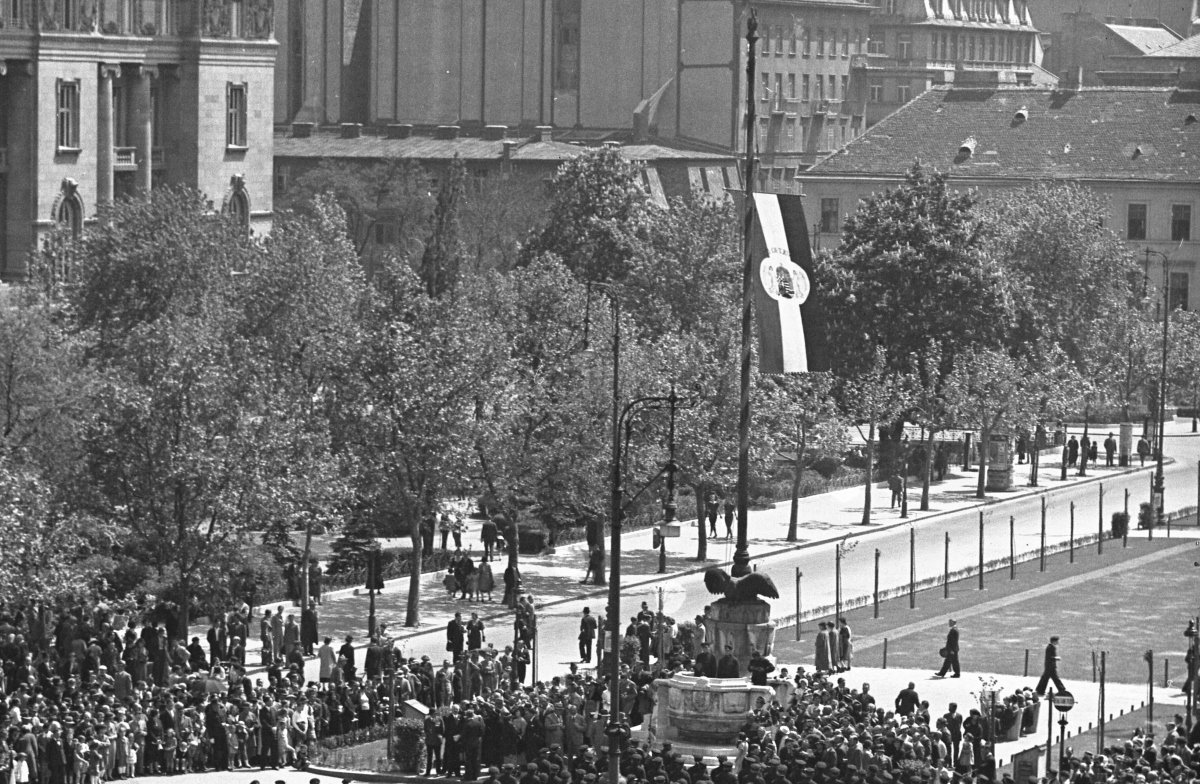
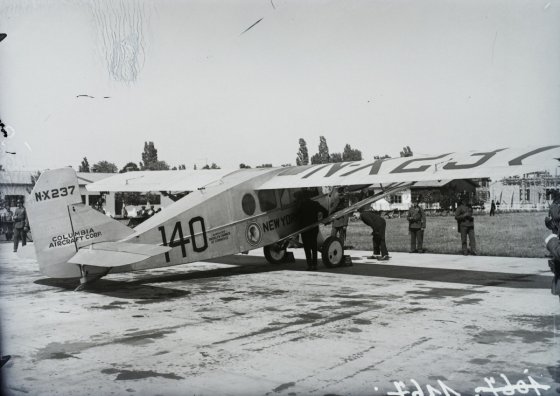

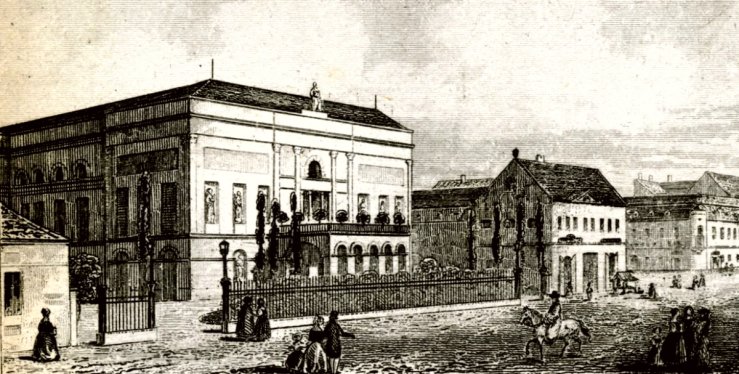

































Hozzászólások
Log in or register to comment!
Login Registration